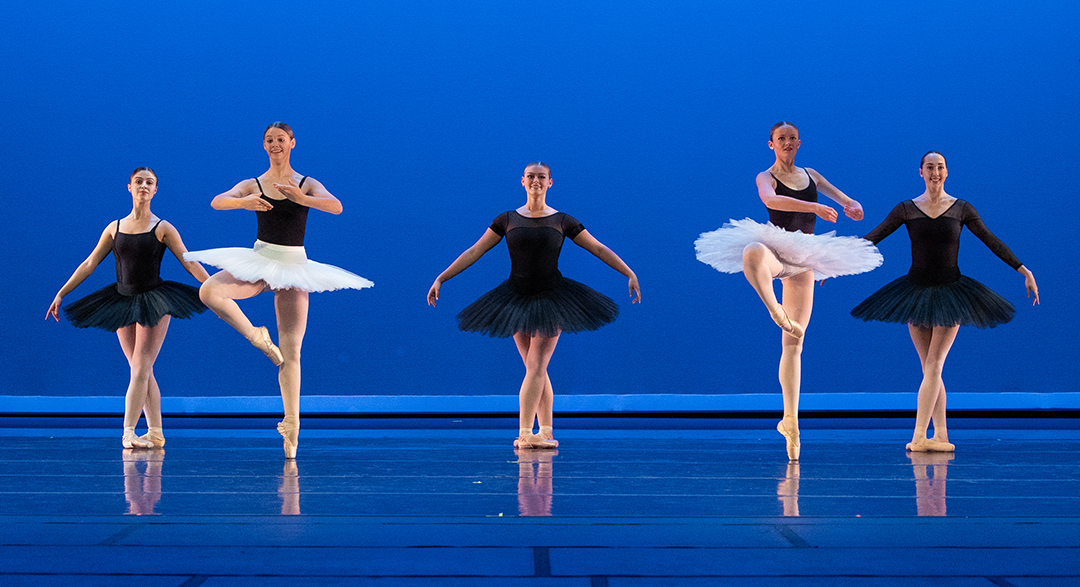If you are an aspiring ballet dancer, you may have heard other dancers talking about ballet trainee programs. But what, exactly, is a trainee in ballet and what should you look for in trainee programs? We answer these questions below.
What is a Trainee in Ballet?
A trainee in ballet refers to a ballet dancer who is currently undergoing professional-level trainee for ballet. Ballet trainee programs are specifically designed to mimic professional ballet settings or to prepare dancers for preparing to audition for scholarships or companies. A trainee in ballet will typically have instruction and rehearsal 12-16+ hours a week, depending on their age. They will have instruction not only in classical ballet, but other dance forms as well.
In ballet trainee programs, dancers are typically exposed to a range of professional choreographers and classical ballets, as well as ample performance opportunities.
Many ballet trainee programs also offer workshops to work with experienced ballet professionals, choreographers, or coaches who instruct in supplemental information such as building resumes, auditioning, and more.
Qualities of a Good Ballet Trainee Program
Just as not all schools of ballet are equal, neither are ballet trainee programs. If you are an aspiring dancer, it is important to do your research to choose a reputable, well-connected ballet program as well as one that fits your lifestyle and goals.
Below are some of the top qualities you should look for in a ballet trainee program:
Experienced Instructors
It probably goes without saying that the quality of instructors of a ballet trainee program can have a huge impact on the success you receive from it. It’s important to do your research on the instructors ahead of time. Look not only for experience within the ballet industry, but experience in teaching ballet as well. Even the best dancers can struggle teaching ballet classes if they’ve never taught before—you’ll gain much greater benefits from instructors who have professional dance experience as well as professional instruction experience.
Here are some tips for what to consider: What have their careers looked like? Do they have experience related to your goals in the ballet industry? Do they have experience instructing as well as teaching, or will you be receiving instruction from dancers who lack teaching experience?
Well-Rounded Repertoire
Even if ballet is your core focus, a good trainee program will also include well-rounded instruction in additional dance styles as well. This instruction helps to improve skills associated with ballet as well as dance in general, giving you skills and knowledge that can be used in audition, choreography, and performance scenarios. It also strengthens your dance resume and gives you additional opportunities to work with a range of choreographers.
Conducive Schedule
Most dancers in trainee programs are also attending school at the same time. It is important that your trainee schedule fits within your other obligations. That said, a trainee program is not only a large commitment, but should also be considered a large priority. Failing to take the program seriously can hinder the experience and results that you get from the program.
Expect to commit between 12-17 hours per week in instruction and rehearsal time. If this is a junior program, you will be closer to the lower end of the range, and if you are in a senior program it will be near the higher end of the range—or higher—depending on the program and your goals.
Good Networking Opportunities
Another thing to look for is opportunities for networking within your program. One of the major benefits of being part of a ballet trainee program is the connections you will make. These connections will come from instructors, directors, choreographers, and workshop presenters. Be sure to be present and engaged and to take the time to connect with these individuals. Ask questions and listen to the answers of those you—and others—ask, and you’ll end up with a connected network you can tap for recommendations, advice, or references.
Supports Your Goals
Before looking for a trainee program, be sure to understand your personal goals. Do you know where you want to end up—dancing in a university ballet program (specific or nonspecific)? Earning a ballet scholarship to your target school? Auditioning for a professional company national or abroad? Defining your goals will give you a more targeted list of specifications to look for in your program.
Explore Central Utah Ballet
Central Utah Ballet in Lehi, Utah offers a junior and senior ballet trainee program. Explore our schedule, instructors, and director information to determine whether these programs are the right fit for you. If you have any questions, please reach out! We are happy to help.

